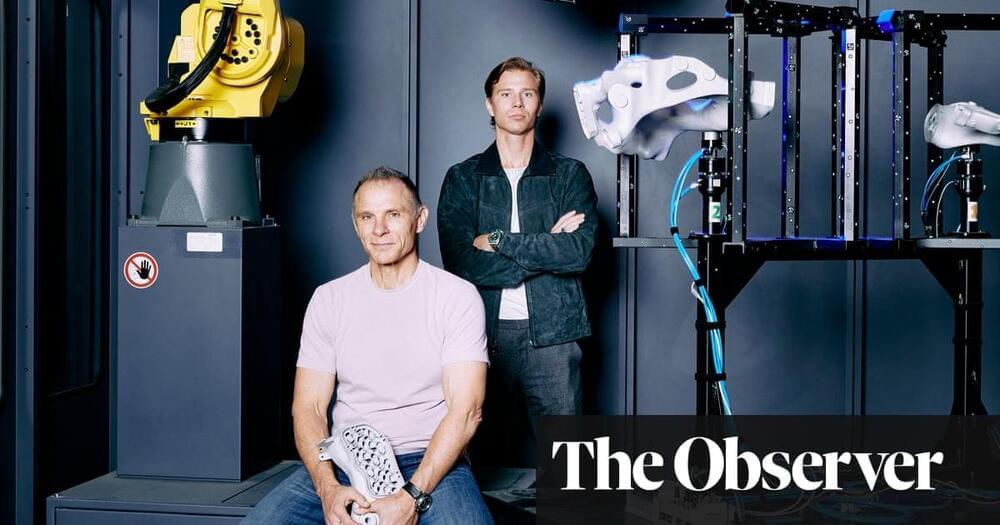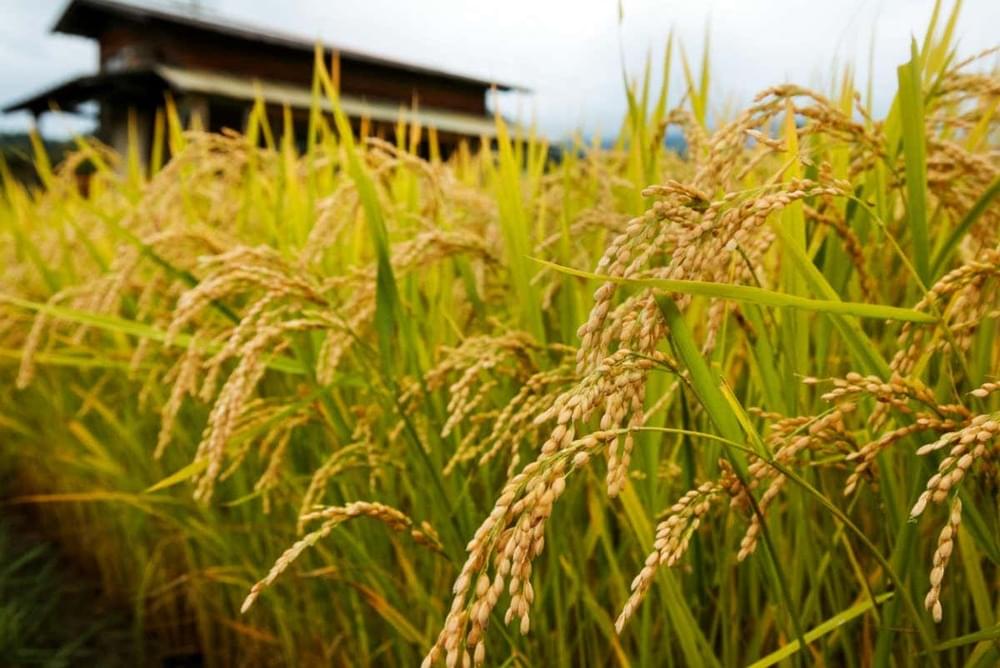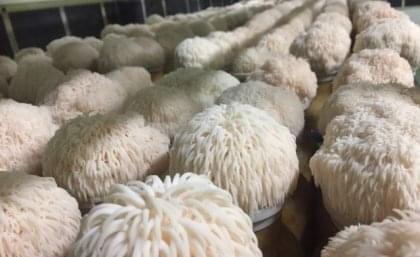Car engines, bespoke medicines, organs for transplant, food, fashion and now even a whole street of houses… Is the all-conquering promise of 3D printing finally coming true? By Tim Lewis.


A system of robots that harvest and transport crops on their own without human assistance has been developed for use in agricultural facilities such as smart farms.
The research team under Choi Tae-yong, principal researcher at the AI Robot Research Division’s Department of Robotics and Mechatronics of the Korea Institute of Machinery and Materials, an institution under the jurisdiction of the Ministry of Science and ICT, has developed a multiple-robot system for harvesting crops.
This technology can be used to help at agricultural sites where there is a noticeable shortage of manpower by harvesting crops through an automated system. This system also includes robots that use autonomous driving technology to then transport the harvested crops to loading docks.

A trio of evolutionary biologists, two with Carleton University, the other with Seoul National University, has apparently solved the paradox of aposematism—how animals managed to evolve with bright colors to warn predators of their toxic nature. In their paper study, published in the journal Science, Karl Loeffler-Henry, Changku Kang and Thomas Sherratt, conducted an analysis of the family tree of over 1,000 frog, salamander and newt species.
For many years, evolutionary biologists have puzzled over the seeming paradox of aposematism, in which animals such as frogs develop bright colors to warn potential predators that eating them will make them sick or even kill them. How could such colors have evolved? Animals that stand out tend to be the first caught and eaten, preventing the evolution of even brighter colors from occurring. In this new effort, the research team set out to solve this riddle.
The work involved analyzing the family tree of 1,100 species of frogs, salamanders and newts, looking for evidence of evolution of aposematism in a new way—by breaking them down into more categories than previous efforts—five instead of two: conspicuous, cryptic, partially conspicuous, fully conspicuous and polymorphic.

😗
Martian soil is generally poor for growing plants, but researchers have used CRISPR to create gene-edited rice that might be able to germinate and grow despite the hostile habitat.
By Leah Crane


Researchers from The University of Queensland have discovered the active compound from an edible mushroom that boosts nerve growth and enhances memory.
Professor Frederic Meunier from the Queensland Brain Institute said the team had identified new active compounds from the mushroom, Hericium erinaceus.
“Extracts from these so-called ‘lion’s mane’ mushrooms have been used in traditional medicine in Asian countries for centuries, but we wanted to scientifically determine their potential effect on brain cells,” Professor Meunier said.

One Health Approaches To Prevent Zoonoses & Antimicrobial Resistance — Dr. Keith Sumption, Ph.D. — Chief Veterinary Officer and Leader of the Animal Health Program; Director, Joint Centre for Zoonoses and Anti-Microbial Resistance (CJWZ), Food and Agriculture Organization of the United Nations (FAO)
Dr. Keith Sumption, Ph.D. is Chief Veterinary Officer and Leader of the Animal Health Program at the Food and Agriculture Organization of the United Nations (FAO — https://www.fao.org/home/en) as well as their Director of the Joint Centre for Zoonoses and Anti-Microbial Resistance (CJWZ).
The Food and Agriculture Organization of the United Nations is an international organization that leads international efforts to defeat hunger and improve nutrition and food security. The FAO comprises 195 members and helps governments and development agencies coordinate their activities to improve and develop agriculture, forestry, fisheries, and land and water resources. It also conducts research, provides technical assistance to projects, operates educational and training programs, and collects agricultural output, production, and development data.
Dr. Sumption has worked on disease ecology at the interaction of wildlife, domestic and the environment for more than 30 years.
Dr. Sumption holds a Doctor of Philosophy (PhD) from the University of Reading, gained following 3 years of field and molecular epidemiology research upon African Swine Fever in southern Africa, and veterinary medicine (Vet. MB) and Natural Sciences degrees from the University of Cambridge in the United Kingdom.
https://gotopnews.com/post/1979903
Scientists created mice with two biological dads by producing eggs from male cells, which is a development that opens radical new possibilities for reproduction. Progress can ultimately pave way for treatments for severe infertility forms and increase possibility of attracting couples of same gender to have a biological child in future. Hayashi, who presented development at the third International Human Genome Regulation Summit at Francis Crick Institute in London on Wednesday, predicts it would be technically possible to create a human egg from a male skin cell in ten years. Considering that human eggs did not create eggs, he argued this timeline was optimistic. Previously, scientists have created mice technically with a detailed step chain, including genetic engineering. This is first time that can be applied first time, eggs were raised from male cells and pointing to an important progress. He was trying to reproduce with human cells, but there would be important obstacles for use of eggs grown in laboratory clinical purposes, including creating safety. “In terms of technology, it will be possible even in 10 years in 10 years, ve he personally added that the technology used clinically to allow two men to have a baby. Orum I don’t know if they are ready reproduction,” he said.“This is a question not only for the scientific program, but also[society].” Technique, X chromosome is missing or partially missing a copy of the turner syndrome, including women with severe infertility forms can be applied to treat and Hayashi, this application is the primary motivation for research, he said. Others argued that translating technique into human cells may be challenging. Human cells need much longer agricultural periods to produce a mature egg, which can increase the risk of undesirable genetic changes. Profess George Daley, the Dean of Harvard Medical Faculty, described the study as “fascinating„ but other researches also showed that creating gamet creating from human cells in laboratory is more difficult than mouse cells.said. The study, which was sent to be leading magazine, was based on a number of complex steps to transform skin cell that carries the combination of male XY chromosomes into an egg. Men’s skin cells were re-programmed into a stem cell-like condition to form the induced pluripotent root cells. Then the Y chromosome of these cells was deleted and changed and ” borrowed from another cell to produce IPS cells with two identical X chromosome. Hayashi said, ” The trick, greatest trick, the reproduction of X chromosome,” he said. ” We really tried to establish a system to replicate the X chromosome.” Finally, cells were grown in an ovary organoid with a cultural system designed to replicate the conditions within ovary. When Yumurtas were fertilized with normal sperm, scientists obtained approximately 600 embryos implanted in the mice, which resulted in birth of seven mouse offspring. ‘Efficiency was lower than the efficiency obtained by normal female-derived eggs, where approximately 5% of the embryos continued to produce a lively birth. Baby mice looked healthy, had a normal life, and as an adult continued to the offspring. ” They look good, they grow normal, they become a father, Hay Hayashi said. He and his colleagues are now trying to increase the creation of eggs grown in the laboratory using human cells. Working on Gamets grown in the laboratory at the University of California Los Angeles, Prof Amander Clark said that it would be a ” big jump in, because scientists have not yet created human eggs from women’s cells. Scientists have created the premises of human eggs, but so far, cells, mature eggs and sperm, a critical cell division step, which has stopped development before the point of meiosis. It can be 10 years or 20 years.”

The machines could help to “drastically increase the efficiency of the farming industry.”
In farming, weeds can strangle crops and destroy yields. Unfortunately, spraying herbicides to deal with the intrusive plants pollutes the environment and harms human health and there simply aren’t enough workers to tackle all the weeds by hand.
A new startup called FarmWise has come up with a solution: autonomous weeding robots that use artificial intelligence to cut out weeds while leaving crops untouched, according to an MIT report published on Thursday.